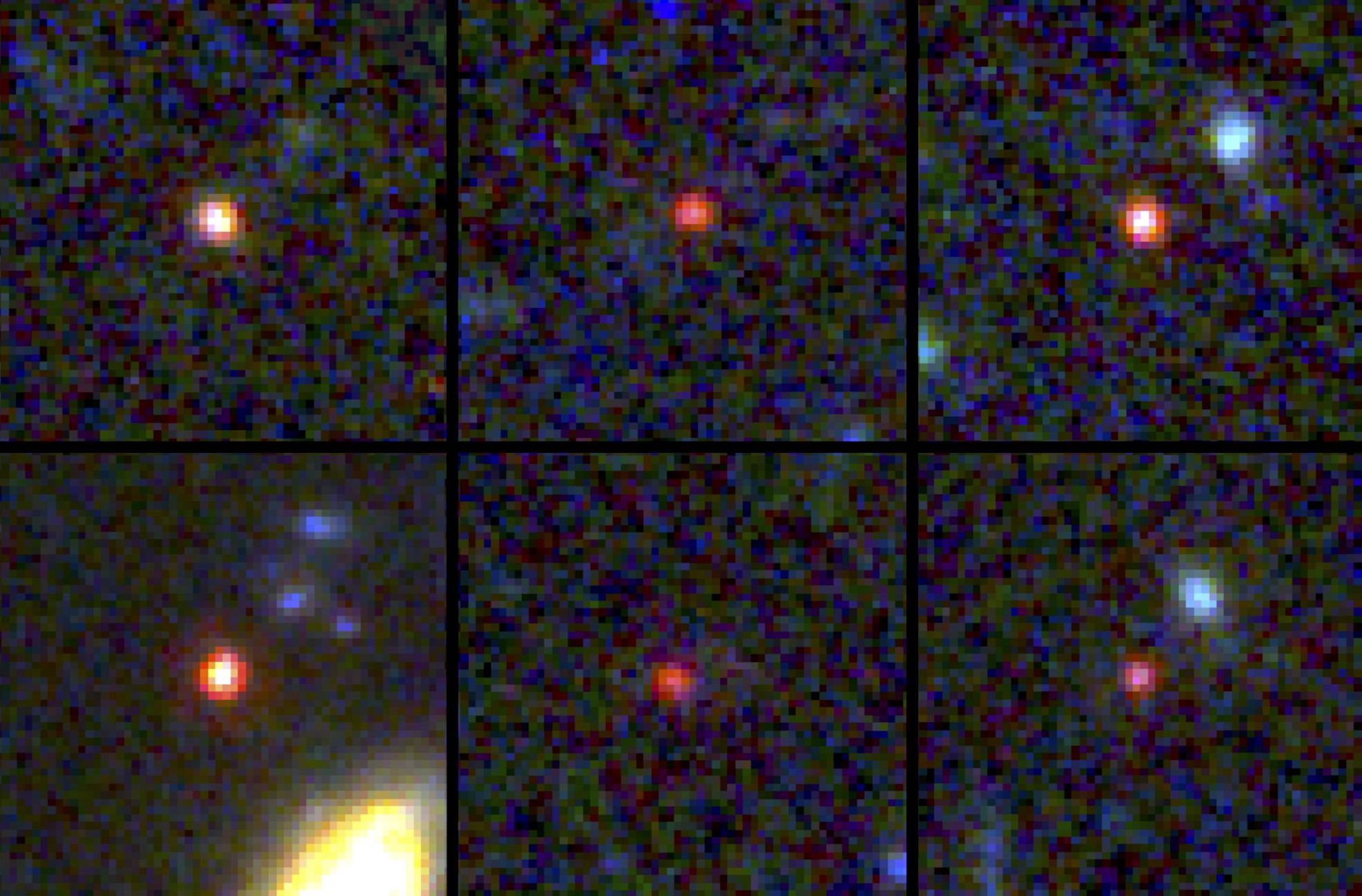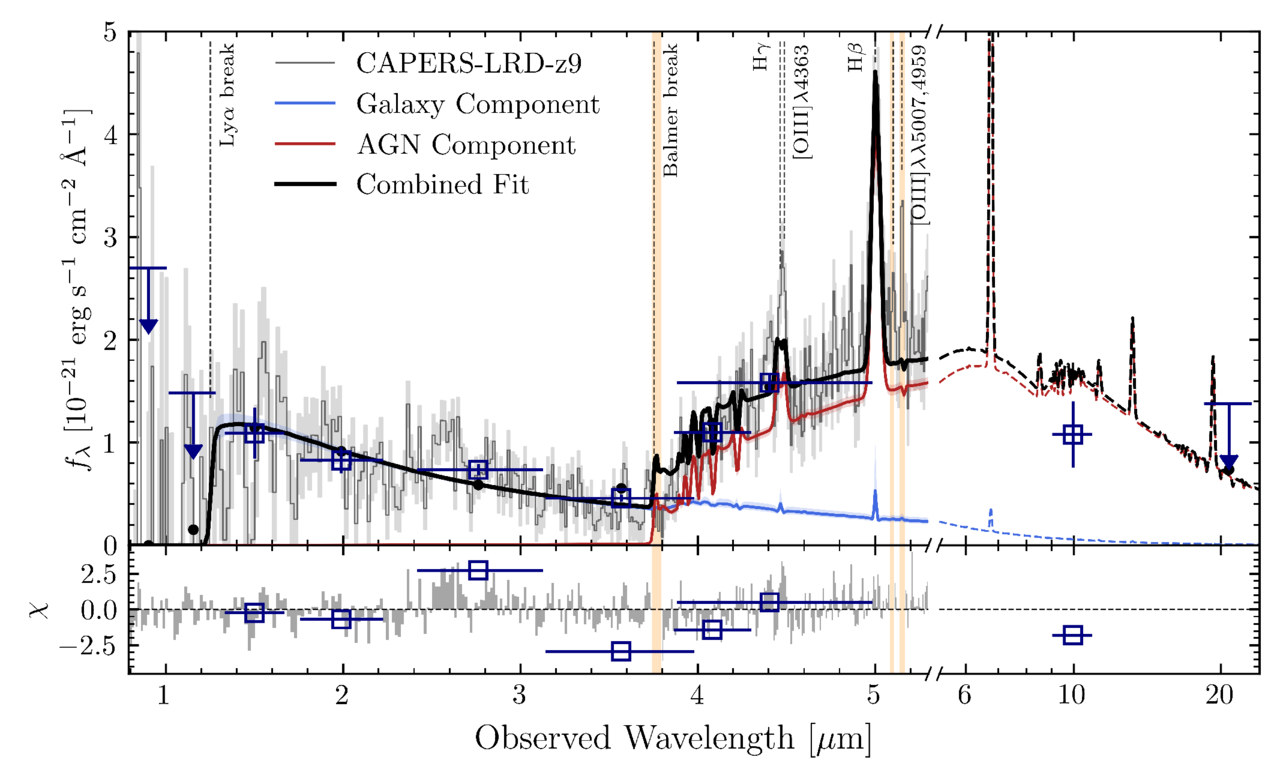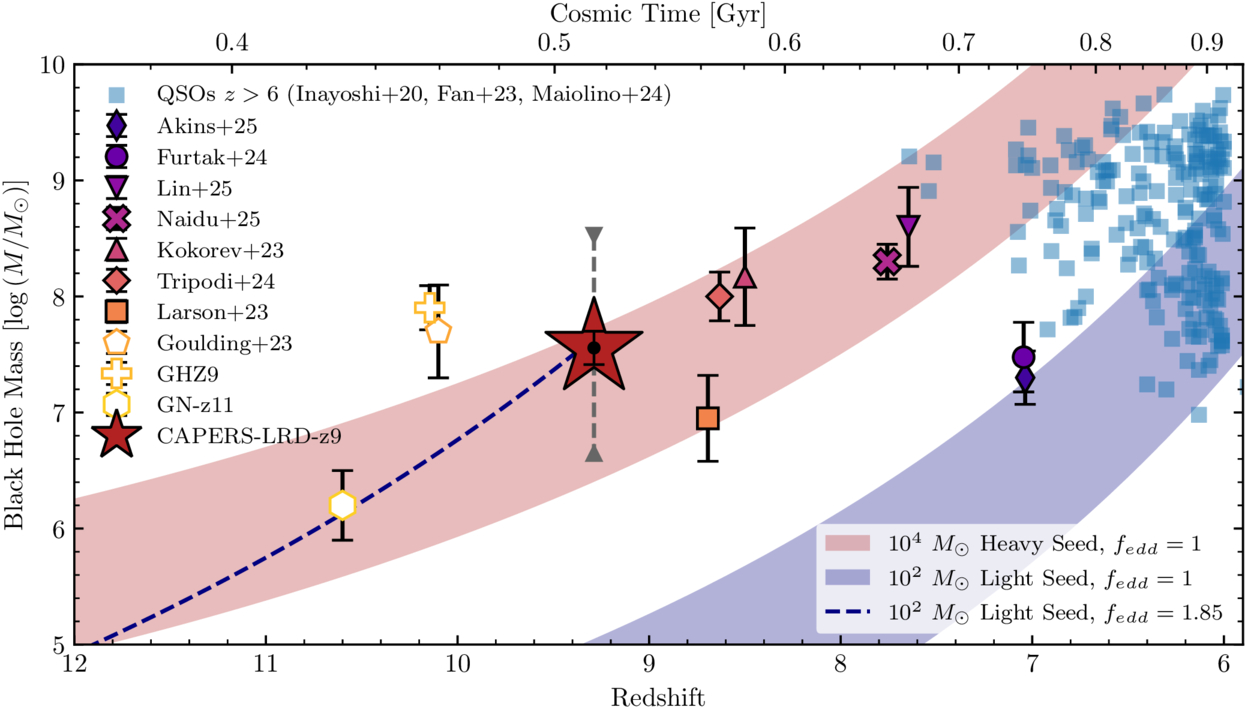NASA / JPL-Caltech
Astronomers have confirmed the discovery of a little red dot galaxy from when the universe was roughly half a billion years old. The galaxy, CAPERS-LRD-z9, is the most distant object to show the tell-tale broad emission lines of gas spiraling around a black hole, opening a new window onto black hole growth in the early universe.
Little Red Dots in the Spotlight
Of all the discoveries JWST has enabled since its launch, none seems as enduringly mysterious as the tiny, distant galaxies nicknamed “little red dots.” These early universe objects are characterized by their small sizes, red color in JWST images, and V-shaped spectra.
But what are little red dots? Are they growing supermassive black holes busily amassing gas? Compact collections of old stars? Shredded stars spoon-feeding baby black holes? As reported today in the Astrophysical Journal Letters, new JWST data provide answers for one particularly distant dot.
JWST Takes Another Look

NASA / ESA / CSA / I. Labbe
CAPERS-LRD-z9 was first identified as a possible high-redshift little red dot when it was observed by the Public Release IMaging for Extragalactic Research (PRIMER) survey with JWST’s Near-Infrared Camera (NIRCam). Anthony Taylor (The University of Texas at Austin) and collaborators followed up on the discovery with JWST Near-Infrared Spectrograph (NIRSpec) observations from the CANDELS-Area Prism Epoch of Reionization Survey (CAPERS). This spectrum pinned the object’s redshift at z = 9.288, corresponding to when the universe was only about half a billion years old.
With CAPERS-LRD-z9 placed along the cosmic timeline, Taylor and coauthors turned to the question of its identity. The JWST spectra revealed a broad emission line from hydrogen gas moving at thousands of kilometers per second — evidence that CAPERS-LRD-z9 harbors an accreting supermassive black hole (an active galactic nucleus or AGN) that is spinning gas into a frenzy around it. CAPERS-LRD-z9 is the most distant object known to show this characteristic signature of a growing black hole.

Taylor et al. 2025
Next, the team examined the little red dot’s spectral energy distribution, using a model that includes an AGN and a stellar population. To reproduce the step-like discontinuity seen in CAPERS-LRD-z9’s spectrum, they used a model in which the supermassive black hole is shrouded in a shell of dusty gas. The model fit well with a black hole mass of 38 million solar masses (though the authors estimate the mass could be anywhere in the range of 4.5–316 million solar masses), an upper limit of 1 billion solar masses on the stellar mass, and a gas density of 1010 per cubic centimeter surrounding the black hole.
Seeding a Black Hole

Taylor et al. 2025
Since successfully fitting one model doesn’t immediately rule out others, Taylor’s team also applied a stars-only model to the spectrum. This model fit poorly, and combined with the presence of broad hydrogen lines from fast-moving gas, this is strong evidence that CAPERS-LRD-z9 contains an accreting supermassive black hole.
This finding raises the question of how a black hole can grow to millions of solar masses in just 500 million years. The authors showed that this is possible in two scenarios: either the black hole began as a >10,000-solar-mass “seed” that grew at the Eddington rate — the hypothetical limit at which a black hole can accrete matter — or it started out as a smaller, ~100-solar-mass seed that grew at a super-Eddington rate. The observations rule out the possibility that the black hole grew from a ~100-solar-mass seed accreting at or below the Eddington rate.
In addition to setting the record for most distant broad-line AGN known, CAPERS-LRD-z9 gives new intel on the lives of black holes in the early universe. This won’t be the last we hear about this little red dot!
Citation
“CAPERS-LRD-z9: A Gas Enshrouded Little Red Dot Hosting a Broad-Line AGN at z = 9.288,” Anthony J. Taylor et al 2025 ApJL 989 L7. doi:10.3847/2041-8213/ade789
This post originally appeared on AAS Nova, which features research highlights from the journals of the American Astronomical Society.

